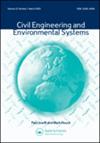测量民用系统连接和自动化的好处——在公路运输背景下的讨论
IF 1.1
3区 工程技术
Q3 ENGINEERING, CIVIL
引用次数: 1
摘要
连通性是指土木工程系统组件传输/接收数据的能力,用于制定战略、战术和操作决策,以提高系统利益相关者的效率、有效性和降低成本。自动化是系统或其组件执行传统上由人类完成的控制功能或决策的能力。随着这两种技术的好处在各种土木工程学科中变得越来越明显,测量这种影响似乎很有用,可以为评估与连接和自动化(C/A)相关的过去或未来应用的可行性或比较替代C/A应用产生信息。本文讨论了用于度量C/A应用的效益或有效性(MOEs)的一些结构。以适当的系统性能指标(SPI)表示的MOE可以帮助确定C/ a应用程序已经完成或预期完成其指定目标的程度,或者比较替代C/ a应用程序的有效性。本文确定了一些spi,并建立了一些moe,用于根据相关spi衡量C/ a应用程序的有效性。本文对公路运输中所讨论的概念进行了说明。本文章由计算机程序翻译,如有差异,请以英文原文为准。
Measuring the benefits of civil systems connectivity and automation – a discussion in the context of highway transport
ABSTRACT Connectivity refers to the ability of civil engineering system components to transmit/receive data for making strategic, tactical and operational decisions towards enhanced efficiency, effectiveness, and lower costs to the system stakeholders. Automation is the capability of a system or its component to carry out control functions or decisions that are traditionally done by humans. As the benefits of these two technologies become increasingly apparent in various civil engineering disciplines, it seems useful to measure such impacts to generate information for evaluating the feasibility of past or prospective future applications related to connectivity and automation (C/A) or for comparing alternative C/A applications. This paper discusses some constructs for measuring the benefits or effectiveness (MOEs) of C/A applications. An MOE expressed in terms of an appropriate system performance indicator (SPI) can help ascertain the extent to which a C/A application has accomplished or is expected to accomplish its specified goals or to compare the efficacy of alternative C/A applications. This paper identifies a number of SPIs, and establishes a number of MOEs for measuring the effectiveness of C/A applications in terms of the relevant SPIs. The paper provides illustrations to the concepts discussed in the context of highway transport.
求助全文
通过发布文献求助,成功后即可免费获取论文全文。
去求助
来源期刊

Civil Engineering and Environmental Systems
工程技术-工程:土木
CiteScore
3.30
自引率
16.70%
发文量
10
审稿时长
>12 weeks
期刊介绍:
Civil Engineering and Environmental Systems is devoted to the advancement of systems thinking and systems techniques throughout systems engineering, environmental engineering decision-making, and engineering management. We do this by publishing the practical applications and developments of "hard" and "soft" systems techniques and thinking.
Submissions that allow for better analysis of civil engineering and environmental systems might look at:
-Civil Engineering optimization
-Risk assessment in engineering
-Civil engineering decision analysis
-System identification in engineering
-Civil engineering numerical simulation
-Uncertainty modelling in engineering
-Qualitative modelling of complex engineering systems
 求助内容:
求助内容: 应助结果提醒方式:
应助结果提醒方式:


